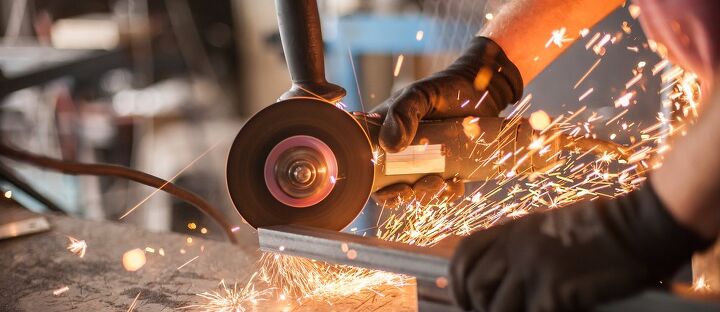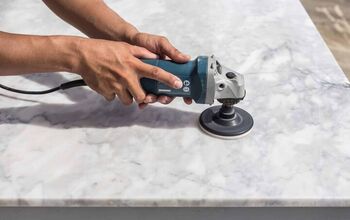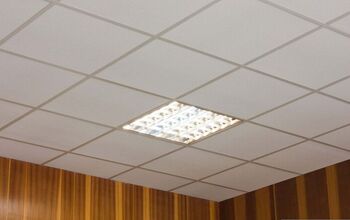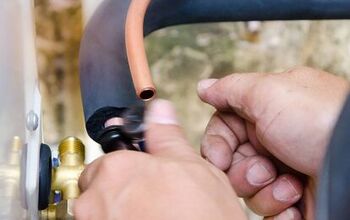How To Cut FRP Panels (Easy Step-By-Step Guide)

FRP is a term that many people might not be fully aware of. It’s also known as fiberglass reinforced plastic, and it’s considered to be one of the most durable wall coverings that your home can have in it. In order to use FRP, you need to be able to cut it to match the size of your walls. This can be daunting, because, well, fiberglass. So, how do you do it?
The best way to cut FRP panels is to have a circular saw blade with a specialized carbide tip. When cutting your panels, make sure to measure the size of your walls and demarcate where you need to cut. As with all things fiberglass, you need to get the proper safety equipment to prevent inhalation and flying shrapnel.
Most people would agree that cutting FRP is something that should only be attempted with the right tools, but there’s so much more to this story than just using the right saw. Let’s talk about it a little further, eh?
Do You Need Wall and Ceiling Contractors?
Get free, zero-commitment quotes from pro contractors near you.

What Do You Need To Cut FRP Panels?
Before you start, you’re going to need the following items:
- A circular saw with carbide tips
- Chalk and pencils
- A tape measure
- A respirator
- Goggles
- Gloves
By having all of these tools readily available, you can make this job a lot easier. You’ll want to ensure the safety of your face and hands as you work. If you don’t have a saw, you can feel free to rent one from your nearest home improvement store.
How To Cut Your FRP Panels
Now that you’ve hit the local hardware store and gathered up your supplies, it’s time to actually get to the meaty part of this process: the actual cutting. Here’s what you will need to do:
- Use a tape measure to find out the size of the wall panels that you need. Then, use chalk and pencils to demarcate how much FRP you need to cut away. You can use small pencil notches and a snap chalk line to make it happen. Make sure you make the lines dark enough so you can see them when you need them. Otherwise, you may have to go back and measure again.
- Secure your carbide blade to your circular saw. If you haven’t switched out your blade quite yet, now is the time. Always check to make sure it’s fitted the correct way before moving on to the next step.
- Put on your protective gear. Things will get dusty and messy in here. You need to make sure to protect yourself, especially when it comes to fiberglass inhalation. Fiberglass inhalation can lead to permanent damage, much like having fiberglass caught in your eye.
- Place your FRP on a table. You want the table to be large enough to secure your FRP cuts. It’s a good idea to check all of this before you even begin the project so that you can ensure you have the right amount of space needed. If you don’t, you can always work on a flat floor.
- Push the amount that you need to cut off the side of the table. You want to have your cut line aligned with the edge of the table. Make sure it’s all lined up correctly.
- Align your blade with the chalk mark you made, putting the saw right at the edge of the table. Slowly press the trigger and push the blade into your FRP panel.
- Keep pushing your carbide blade along the cut, keeping the blade aligned with your chalk line. Keep going until your FRP hits the floor. If you stop in the middle then you run the risk of tears or unevenness. This is why it’s so important to align and secure the FRP before you even begin cutting.
- Once you cut the FRP, use the sharp edge of a utility knife to cut away any burr. This will help prevent snagging and inadvertent cuts later on. If you want to, you can also sand it smooth using 60-grit sandpaper or you can even use a lighter type of file to be able to smooth the sharp edges. Don’t press too hard as you don’t want to actually take any part of the FRP off.
- You’ve finished! Prior to doing any more work, make sure to clean up your workspace with a vacuum. Remove your protective gear and wash your hands to ensure that no dust remains on them before you do anything else.
Can You Score And Snap FRP?
If you don’t have a carbide saw, another option is to “score and snap” your panels. This involves taking a regular utility knife and making a groove along the line that you need to cut your panels. Once you’ve put a good groove in using a sharp knife, take the panels and bend them back and forth. After a few bends, you should get a clean snap.
This method is a faster way to cut FRP, but there’s a caveat. On some rare occasions, the groove won’t be deep enough and may end up breaking unevenly. That’s why it might be better to just go “slow and steady” when you’re trying to win that race.
Are There Other Tools You Can Use To Cut FRP?
Admittedly, carbide blades can be pricey and it can be a hassle to work with them. Another option that’s suggested as a good way to cut FRP is to use 14-gauge electric metal shears. These shears have the power to cut through FRP, but there’s a downside. Due to the way they cut, you need to be aware that you’ll waste about a 1/4 inch of material. You will need to demarcate that when you’re prepping your cut.
Once the cut is finished, you might have shreds and burrs on the side of your FRP. The good news is that these can be taken care of by using rough sandpaper (or a sanding block). Make sure to wear a respirator when sanding stuff down. You don’t want to breathe in that fiberglass!
Can You Buy Precut Fiberglass Reinforced Plastic?
Most of us are not fans of having to spend time measuring and cutting plastic. It’s not exactly fun. So, if you’re looking for convenience, there is some good news to be had. Some suppliers are willing to precut your FRP for you, as long as you buy a certain amount or pay a premium price.
If you want to get some precut FRP, be aware that this isn’t the kind of thing you can get at a big box store like Home Depot or Lowe’s. In order to get your FRP cut to the perfect size, you will need to go to a specialized retailer who focuses on FRP and similar products. From there, you have to ask if they ship precut FRP.
Why Should You Cut Your Own FRP?
You don’t have to cut your own FRP, but if you’re like most, you’ll want to. One reason you tend to see a lot of people choosing to cut their own FRP is because it can be hard to find a non-commercial retailer who offers this. Those who do? Well, they tend to ask for a high service premium. It’s just easier to learn how to cut your own in most cases.
Cutting your own FRP can be done with minimal investment in time and tools. And yet, it can literally save you hundreds on a single project. If that isn’t reason enough to consider adding a little more DIY to your project, we don’t know what is.
Can I Have A Professional Cut My FRP?
If you’re not comfortable with cutting your own FRP you can always hire a professional to do this, however, it will cost you between $10 and $15 per cut. Another solution would be to hire someone off of a website that can give you better fees, but who also knows what they’re doing.
You can always post an ad on Craigslist or Facebook marketplace to look for someone who can do this for you instead of paying for a professional. Or, check with your friends and family to see if there’s anyone willing to help. Even a friendly neighbor may be willing to lend you a helping hand.
Do You Need Wall and Ceiling Contractors?
Get free, zero-commitment quotes from pro contractors near you.

Our Final Take
The important thing to recognize about FRP is that this is not wood. It’s fiberglass, and that means you are going to have to take extra precautions when it comes to cutting it. The good thing about this is that you have multiple options when it comes to your method of cutting. They range from a carbide circular saw, to electric metal shears, to using a classic “snap” technique.
When you’re cutting your FRP, remember that you need to wear the right protective gear regardless of what technique you use. A respirator, goggles, and gloves can help prevent serious cuts, fiberglass inhalation, and eye injuries. After all, you’re cutting something that can splinter at a moment’s notice. To make sure you stay safe, gear up. It’s better to splurge on gear than to shell out for medical bills.
Related Guides

Ossiana Tepfenhart is an expert writer, focusing on interior design and general home tips. Writing is her life, and it's what she does best. Her interests include art and real estate investments.
More by Ossiana Tepfenhart


























